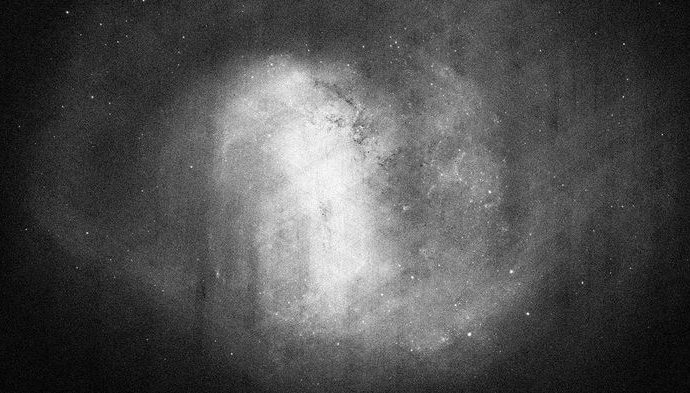The Large Magellanic Cloud, one of the Milky Way’s nearest neighbors, may be more massive than previously thought.
“It’s like waiting for Christmas,” said Vasily Belokurov, an astronomer at the University of Cambridge in the United Kingdom last week. Today, the gifts arrived: the exact positions, motions, brightnesses, and colors of 1.3 billion stars in and around the Milky Way, as tracked by the European Space Agency’s (ESA’s) €750 million Gaia satellite, which after launch in 2013 began measuring the positions of stars and, over time, how they move. On 25 April, ESA made Gaia’s second data set—based on 22 months of observations—publicly available, which should enable a precise 3D map of large portions of the galaxy and the way it moves. “Nothing comes close to what Gaia will release,” Belokurov says.
One might think that the galaxy is completely mapped. But large parts of it are obscured by gas and dust, and it is hard to discern structure from the vantage of the solar system. Gaia is not only expected to clarify the spiral structures of the galaxy today, but because the satellite traces how stars move, astronomers can wind the clock backward and see how the galaxy evolved over the past 13 billion years—a field known as galactic archaeology. With Gaia’s color and brightness information, astronomers can classify the stars by composition and identify the stellar nurseries where different types were born, to understand how chemical elements were forged and distributed.
Gaia isn’t only about the Milky Way. For solar system scientists, the new data set will contain data on 14,000 asteroids. That’s a small fraction of the roughly 750,000 known minor bodies, but Gaia provides orbit information 100 times more accurate than before, says University of Cambridge astronomer Gerry Gilmore, who heads the U.K. branch of Gaia’s data processing consortium. That should help astronomers identify families of asteroids and trace how they relate to each other, shedding light on the solar system’s past and how planets formed from smaller bodies.
For cosmologists, the data set will improve distance measures to stars of known brightness such as Cepheid variables, crucial stepping stones that allow a “distance ladder” to be built out to other galaxies—so that the expansion rate of the universe, also known as the Hubble constant, can be calculated. And exoplanet hunters expect that Gaia will eventually see thousands of stars shifting from side to side because of the gravitational tugs of Jupiter-size planets in distant orbits, but these won’t emerge until the satellite’s precision improves in later data releases. “No one in the world knows what we’ll find,” says David Hogg of New York University in New York City.
The Gaia team released an initial catalog in 2016 and, although it contained more than a billion stars, it only provided motions for 2 million of them. It was a “sampler to get people used to handling Gaia-type data,” Gilmore says. The 2016 release showed that the Milky Way was larger in size than previously thought. The first paper exploiting the data appeared on the arXiv preprint server on the same day. Ever since, Gilmore says, there’s been an average of one paper per day.
This time, astronomers are even more geared up with algorithms that can crunch the tabular data. Belokurov says he and his group have about 50 ideas to pursue, including an assessment of the distribution of mass across the Milky Way and the Large Magellanic Cloud (LMC), a nearby satellite galaxy. Astronomers have long estimated the LMC’s mass at about a billion times that of the sun, but recently studies have suggested it may be heftier. With Gaia data, they may be able to see Milky Way objects that are perturbed by the LMC, which would be a sign of its more massive gravitational influence. “There’s going to be a complete science explosion,” Belokurov says. “I’m planning on not sleeping for a week or two.”
Hogg is also ready for some heavy-duty Gaia hacking. For the release, he invited colleagues from around the world to gather in New York City to work on analyzing the data. He plans to start by drawing up plots that were not possible previously, to look for new trends. Graphing color versus brightness for white dwarf stars, for example, could illuminate how these stellar remnants change as they cool off and eventually become black stellar cinders. Following Gaia’s first release, “almost every plot led to a paper,” he says.
The 450-strong Gaia consortium is already at work on a third data release, planned for 2020. “There are very clear areas we can improve,” says ESA’s Timo Prusti, Gaia project scientist, at the European Space Research and Technology Centre in Noordwijk, the Netherlands. For example, the team wants to return to the very brightest stars, which saturate the detector, in a special short-exposure observing mode. The team also wants to improve on ways to deal with stray light getting onto the detector, a problem which only emerged after launch.
Gaia is also unusual because the scientists who work on the mission are not given a period of exclusive access to the data, a common practice in astronomy. Although Gaia consortium members get to intimately know the way the data are collected and processed, they cannot use the data to do science until after the release, just like everyone else. “It’s brave and very admirable,” Belokurov says.
Gilmore says his team members have been laying bets on how many papers will hit the preprint servers on Day One. Belokurov says: “It’s like going to a festival—the festival of Gaia.”
Source: Science Magazine

































Leave a Comment
You must be logged in to post a comment.